FW
India took part in the International Apparel and Textile Fair, November 1 to 3, 2017, Dubai. The delegation comprised leading Indian clothing and textile groups, who are into various products like men’s wear, kids’ wear, high fashion women’s wear, technical textiles etc.
India is positioning herself as a high fashion and quality garment exporter. There is a huge potential to promote Brand India in the UAE and other markets in the region. India is the UAE’s largest trading partner and its exports to the UAE during the year 2016 touched $32 billion. This was 22.7 per cent of India’s garment exports to the world. The UAE provides excellent opportunities for Indian companies to utilise Dubai’s location as a platform for increasing exports to other countries.
India and the UAE can work together in the textile segment to promote high quality and fashion clothing, which can be exported not only to the West Asia and West African region but also to other developed countries including the EU and the US. The Federation of Indian Export Organisation not only helps Indian exporters find markets across the globe but also helps overseas businessmen to do matchmaking and enter the Indian market.
Finland-based fashion chain Lindex has made a range of denim using only a bottle of water, which is about two liters of water. The conventional washing process for a pair of denim jeans requires 50 to 70 liters of water. Lindex developed its new ‘Even Better Denim’ with Jeanologia, a denim technology and solutions provider based in Spain. The new process uses air and laser technology.
Even Better Denim styles are available for women and children. Even Better Denim is made from eco-friendly materials, including recycled polyester and post- consumer recycled cotton. Each pair of jeans is dyed in clean indigo dye and uses more sustainable trims, including buttons, pocket bags and zippers.
In 2014, Lindix began focusing on sustainable denim. Over the last three years, Lindex’s progress has led to 100 per cent of its denim assortment being classified as Better Denim—meaning, the garments are made from more sustainable materials and washed with only eight to 12 liters of water. Lindex’s goal is to continue its work with Even Better Denim styles and to develop additional low- impact apparel in the future. The goal is to offer customers denim with the least environmental impact possible.
The USDA raised its estimate for US cotton crop to 300,000 bales. The crop size was increased based on USDA increasing the average US yield to 900 pounds per acre. All states in the Southeast averaged at least 900 pounds per acre and all states in the Midsouth averaged above 1000 pounds per acre.
US carryover was increased 300,000 bales, up to 6.1 million. Certainly a few more hands must be played, but the odds favor a somewhat smaller final crop size and bigger export number. Thus, a carryover closer to 5.5-5.6 million bales is likely on the horizon.
With futures between 67 and 72 cents mills will continue to flock to the US for cotton. US cooperatives and merchants are aggressively offering strong basis bids to potential mills and that has encouraged excellent sales. It is a far more economical trade for mills versus other cottons. Mills can take advantage of the basis offers, buy On-Call and fix prices at later date. Granted, mills have not been very astute at fixing the price the past two years, but possibly they will begin to finally pay attention this season.
USDA raised its estimate of world cotton demand 1.3 million bales over last month’s estimate, and is now up to 119.3 million bales, more than 5.0 million bales more than last year. Being redundant, demand moves markets and the demand for cotton will continue to grow. Driven by consumer preferences, and the rapid increase in polyester prices due to massive worldwide pollution issues that are still seemingly denied by the casual wear brands like Nike and Adidas, as well as some of the big box retail groups, cotton has become much more price competitive versus polyester and other plastic fibers.
In order to attract investment, the Bihar industries department and state apparel and textile sector in association with Apparel Export Promotion Council (AEPC) organised a meet at Ludhiana to showcase initiatives taken by the Bihar government.
The state’s principal secretary (industries) S Siddharth gave a detailed presentation on policy initiatives, infrastructure, ease of doing business and availability of land and skilled workers in Bihar. He pointed out they have launched an online single window clearance system for investors to submit their proposals from any part of the world. Approvals will be granted online, further around 2,000 acres of land is available with the state government for allotment to investors.
Leading exporter and AEPC's Harish Dua said they plan to visit Bihar soon to decide on investments in the state. Investment commissioner R S Srivastava stated there is large domestic market in Bihar with a population of over 11 crore. Also, the state provides electricity for more than 22 hours a day throughout the state.
Asics has become Bluesign’s first Japanese partner for responsible chemical management. The sportswear brand joins 500 companies worldwide that are using Bluesign framework to eliminate potentially harmful substances from manufacturing in the production of textiles.
Asics intends to use Bluesign assessment tools for chemical management throughout its supply chain. The brand will use Bluefinder, which acts as a database for suppliers showing chemicals that have received Bluesign approval after a series of risk tests. The company says it will also use Blueguide which supports brands in their selection of materials as it highlights Bluesign approved fabrics, accessories and trims.
Partnering Bluesign offers Asics the opportunity to shift focus from restricting hazardous chemicals to providing insight into positive chemicals that its suppliers can use. Asics has sustainability targets that include expanding its supply chain management scope to include Tier II suppliers by 2020, which the company says Bluesign will contribute to.
Year 2016 was a special one for the ASICS group. This was the year it kicked off its new five-year ASICS growth plan, embarking on an ambitious new set of sustainability targets towards 2020. Last fiscal, ASICS Europe launched a centralized review of energy procurement and updated its electricity contracts.
The Council for Textile and Fashion is one of the participants at ISEA Australia. It is clearly mandated to promote the growth of the textile and fashion industry in Australia and has been in service for over 65 years. This not for profit organisation draws members from across the fashion and textile industry/ supply chain ranging from micro to large business establishments from both Australia and globally. Its focus areas are strengthening supply chains, fostering design and innovation, promoting ethical practices, supporting emerging businesses and building an Australian export base.
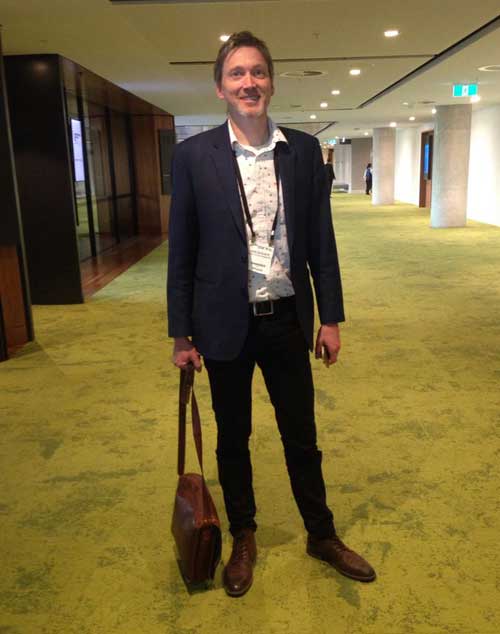
Fairs like ISEA provide immense opportunities for trade and support services. The Australian business environment is ingrained with lots of innovation across the supply chain and business enterprises are seriously focused on niche businesses.
It was not very long ago when the Australian textile and clothing sector had many mills and factories. That has changed. The new age business environment today is fostering immense lateral thinking to stay tall and lofty in this fiercely competitive business landscape.
Changing business dynamics is forcing this segment to relook the entire business proposition as wages per month in the Australian market have increased significantly through the years.
Australia’s spinning facilities are depleted. Well rounded skill sets are also conspicuously missing from the textile manufacturing stand point. Warp knitting has become antiquated. However there are groups like TFS that are thriving. TFS specialises in research and development for elastane-based fabrics.
India’s textile exports to Australia are growing by 12 per cent. With a FTA that can reach 20 per cent or thereabouts even though the Australian textile and clothing industry is growing only by one per cent or so.
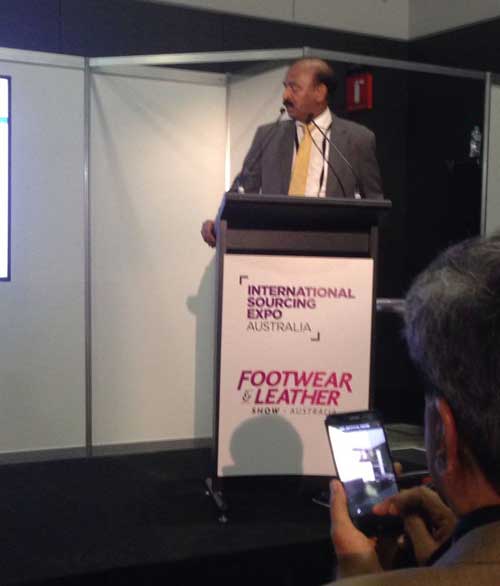
India has an advantage in that it has a complete supply chain unlike Bangladesh, Vietnam, or Cambodia.
Going forward there is a huge business opportunity for Indian economy and trade. By 2025 India and China are expected to be the largest business block globally, approximately 800 billion dollars, compared to the EU and the US, which is expected to be not more than 750 billion dollars.
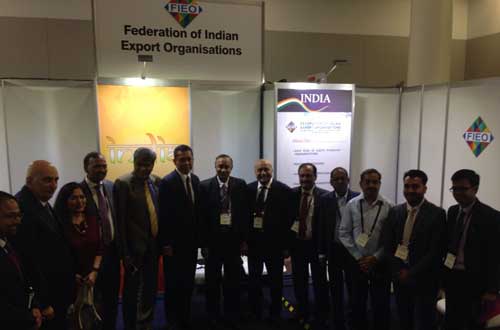
Fieo is leading the participation of over 80 companies in this edition of ISEA. The variety of products exhibited range from men’s wear, children’s wear, footwear, jewelry, fabric, textile etc. India's exports to this sector also constitute roughly 2.6 per cent of its exports to the world. Therefore, the potential to increase India's share in the lucrative Australian market in this sector is enormous.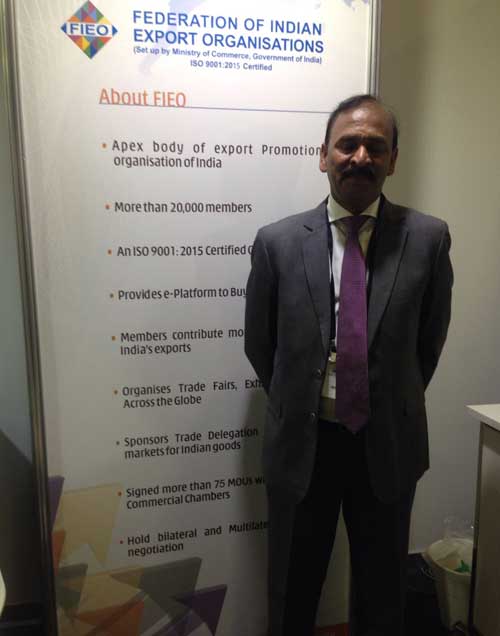
ISEA provides the right platform for exhibitors from India to present a strong business case. It will also be an opportunity to forge partnerships and invite others to participate in India's fast growing economic landscape. The objective of Indian participation here is to project the image of India as a fast emerging economy and its attractiveness as a destination for high end manufactured goods.
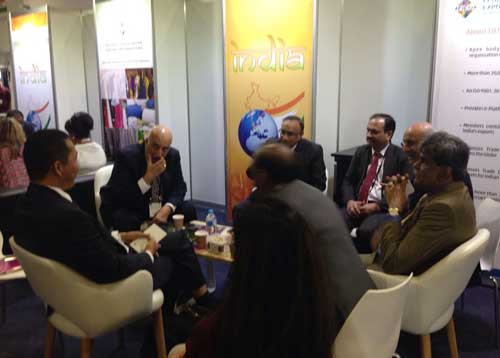
Bangladesh is the world’s second largest textile exporter. It is geographically well placed to exploit its well harnessed and oiled ecosystem which started some 35 years ago.
The next Asian tiger dreams of becoming a middle income and developed country by 2041. As of now it's the 77th largest trading nation clocking an annual export growth of 13.6 per cent and 73 per cent of its population is below 40 years.

With garment buyers moving out of China, the sourcing caravan is moving on to the next hotspot: Bangladesh. Its core competencies remain in knits and denims where it already sort of self-reliant. The major export destination remains the EU region but the country is consciously moving to non-traditional markets going forward.
It enjoys GSP facilities to the EU, quota and duty free access to many first world countries. Reputed buyers are making a beeline for Bangladesh’s exporters.
Bangladesh-Australia trade has doubled in the last four or five years. The textile landscape has changed dramatically in the last 10 or 15 years in Australia. The country had many textile mills and factories. But now it is largely an evolved retail market and dependent more or less on imports.
Reliance will increase its presence in the polyester space after the launch of its new brand RElan. This is a portfolio of specialty fabrics. Reliance is in talks with at least five leading domestic and international apparel brands to co-brand RElan. The co-branding will give Reliance a foothold in the Rs 2,50,000 crore Indian apparel industry, almost a 50-50 share of men’s wear and women’s wear. The move will help India to reduce its dependence on imports of specialty fabrics, most of which come from China, and to a smaller extent from Malaysia, Indonesia and South Korea.
Reliance is planning to tie up with 200 textile manufacturers, giving focus to Punjab, Haryana, UP and Rajasthan, which account for 20 per cent of India’s fabric production capacity and manufacture textiles worth Rs 50,000 crores a year.
Global per capita consumption of polyester is 6 kg per person, compared to 3 kg per person in India and 11 kg in China. The polyester industry in India is expecting a yearly growth of around five per cent, much higher than the global average of three per cent. In partnership with VF Corp, owner of the world’s largest denim brand, Wrangler, Reliance will also launch an Inficool denim range by February.
A new natural fiber has been extracted from a plant that grows almost everywhere in Bangladesh. The thread is said to be better than jute or linen and surpass the brightness, softness and strength of jute and linen.
Prof Anwar Ul Islam, a pharmacy professor of Rajshahi University in Bangladesh has already finished a four-year research on the fiber and has called upon textile experts to work on his findings and see whether it could be produced commercially. He feels it would be useful for making comfortable clothes.
The extraction process of the fiber is the same as jute's. According to a 2016 report, the fiber is quite comfortable like cotton as well as very glossy, which would bring luster, brightness and shine in clothing. The plant from which the fiber is obtained was never used for collecting fibers anywhere in the world. Nor was the microorganism or bacteria ever used for rotting the plant's stem to extract any fiber.
The professor who is currently working with US scientists on anti-cancer medicines calls his findings a by-product of his regular hit-or-miss experiments. Apart from teaching, he conducts experiments, often out of his personal necessities. The professor developed a herbal nasal drop when he suffered cold, and produced a hair tonic and a fairness cream from herbs when he felt he was ageing. The new fiber came up in the middle of these experiments.












